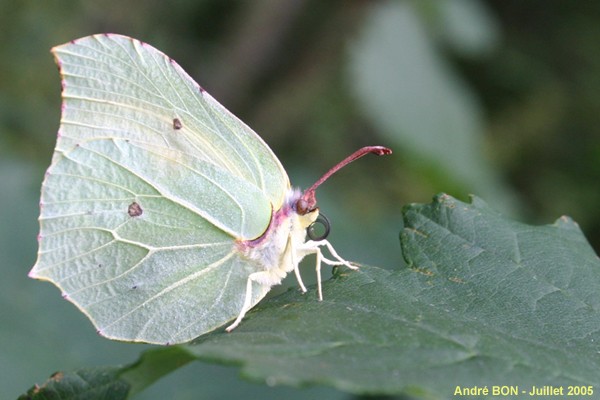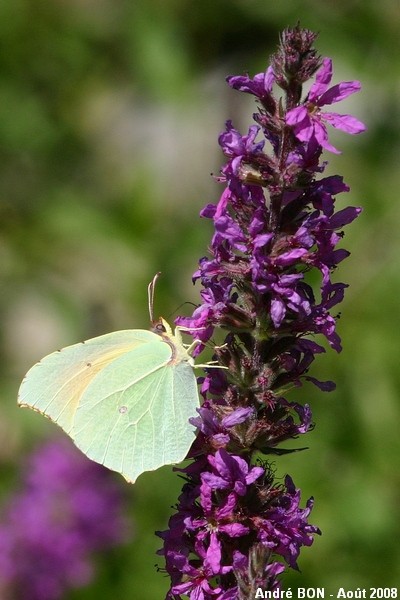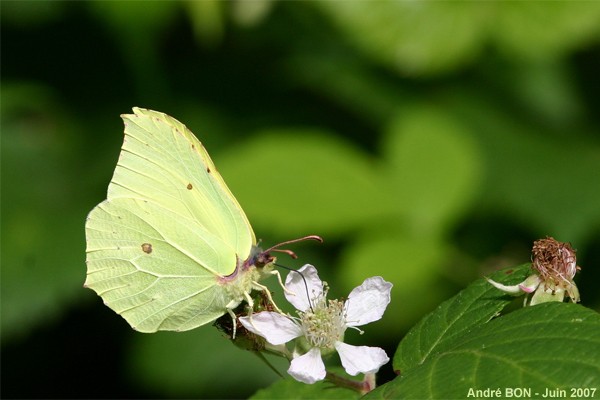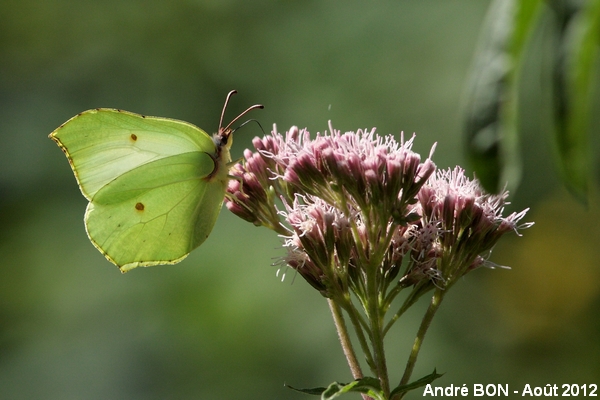



| Brimstone (Gonepteryx rhamni (Linnaeus, 1758)) |




|
|
Scientific name: Gonepteryx rhamni (Linnaeus, 1758) Common name: Brimstone French name: Citron Order: Lepidoptera Suborder: Rhopalocera Family: Pieridae Subfamily: Coliadinae Wingspan: 52-60 mm Biotope: Woodlands, gardens and road sides. Geographic area: Europe except northern Scandinavia and Scotland. Flight time: July to September (the butterflies which over winter go out in April to mate and lay their eggs). Number of generations : 1 Caterpillar: Dark green with a white line on the sides and a thin tail. Host plant: Buckthorn (Rhamnus) |
You can identify the Brimstone with its bright yellow colour and the typical points of its fore wings and hindwings. The colour of the female is rather pale green. It over winters as an adult butterfly and flies back again in at the first sunny days of the spring. In Europe, any yellow butterfly seen at the very beginning of spring is certainly a brimstone. This is one of the few butterflies that over winters as an imago, hidden in the vegetation like ivy. |
| [To know more about the Brimstone] [Next picture] [Top] |

|
Nice proboscis, isn't it? |
| [To know more about the Brimstone] [Next picture] [Previous picture] [Top] |

|
I have only observed Brimstones with the wings closed. When will I shoot a picture of the upper side? |
| [To know more about the Brimstone] [Next picture] [Previous picture] [Top] |

|
Brimstone gathering nectar on a Bramble flower. |
| [To know more about the Brimstone] [Previous picture] [Top] |

|
It's easier to approach butterflies when they are busy gathering nectar. |